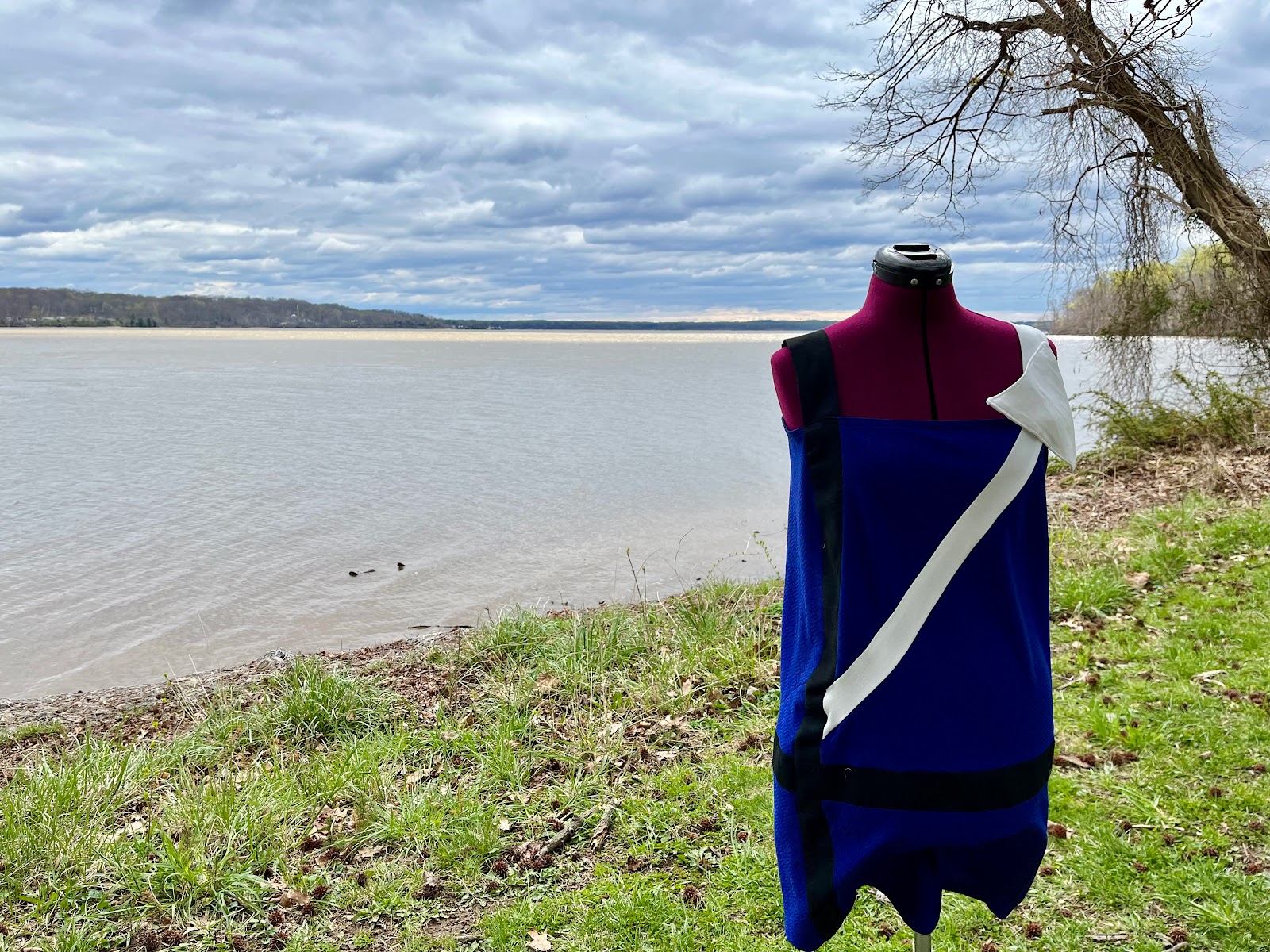Can a Linear Function inspire fashion?
Can a Linear Function inspire fashion? Well to answer that, let's start with what is a linear function. In school, linear functions are one of the first things taught in Pre-Algebra and Algebra. In geometry, there are things called points which represent a location, and if you have two or more points on a plot you can draw a line through them. This line goes on for infinity, unless otherwise stated, but for our means we will assume it goes on forever. You may remember seeing something like this at some point in school:
So how can something so basic and simple inspire a whole look? Well if you have multiple lines you can start to describe their behavior. Maybe the lines intersect at exactly 90 degrees causing them to be perpendicular or maybe the lines never intersect causing them to be parallel. These special circumstances lead to different patterns that can be used for further analysis, but that would be for a different and more in depth post.
Thinking of the different patterns and characteristics of a line, I decided I wanted to play around with parallel, perpendicular, and a regular linear function. Putting these ideas together in my head gave me the idea for a sack dress inspired by the 1960's fashion. I even showed the idea to my Grandmother who agreed this looked like a very comfortable dress she had in the 60's. I wanted to incorporate the axis for which you would plot the line (this would be the perpendicular lines), then I wanted the shape to be box like to represent parallel lines. Finally I wanted a contrasting color stripe through the dress to represent my linear function. This is what the original rough sketch was for the idea:
To begin sewing this dress I knew I needed to work on adding lines. I wanted to make this be a sustainable dress too so all fabric used came from a scrap box and the black fabric was actually an old tablecloth. I cut out black strips and sewed them to the blue fabric to form the axis of my plot. I then repeated this for my horizontal line.
Once the axis was complete I cut out a white strip to add as the main "linear function" highlight to the dress. I had to cut out a notch in the original fabric too for it, so that it could lay correctly. I had thought about having this line wrap around the dress, but I changed my mind and opted for it just on the front. With the fabric now sewn and designed, it was time to start constructing the dress itself.
Since I was opting for the 60's style sack dress, there wasn't too much I needed to do as far as "form fitting" went. I wrapped the dress around my dress form (I've named her Sally), and then took a hem at the top to remove the raw edge. In addition, I sewed up the side to create the sack shape.
Next I added some straps to this dress. I wanted to play around with the lines being straps to give the look of them going on forever. With this, I had one strap be black and one be white. Once the straps were sewn, I attached them to the dress to have the basic shape complete. When I was looking at it though, I wanted one more fun detail and that was adding a triangle to the white strap to give the look of the point of a line. I did add some interfacing to make sure the triangle could stand on it's own, and then I hand sewed it onto the strap.
The last step was to hem the bottom. I purposefully did the horizontal stripe low to give it the look of a dropped waist, but I didn't want the dress to be too long overall so I hemmed it to hit right below the knee. With that seam complete, the dress was done! I think it's such a fun way to show a linear function and plotting a line! What do you think? Did I design a dress around a linear function?
Watch the full video!
Instagram: @sewemmydesigns
Facebook: www.facebook.com/sewemmydesigns
Want more information about linear functions? Check out these links!
- Linear Functions - University of Columbia
- Definition of Linear Functions - CueMath
- The slope of a linear function - Mathplanet

















Comments
Post a Comment